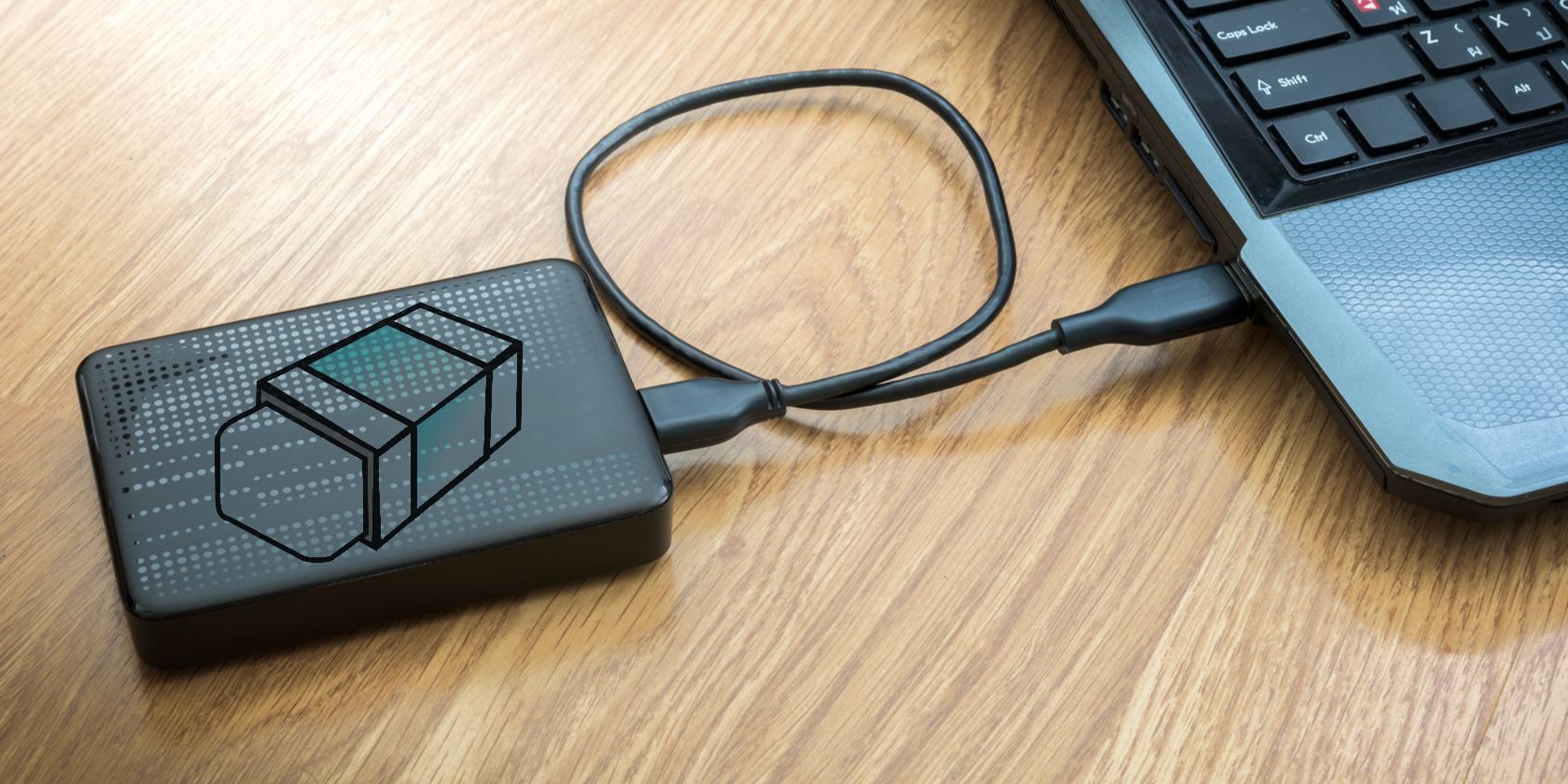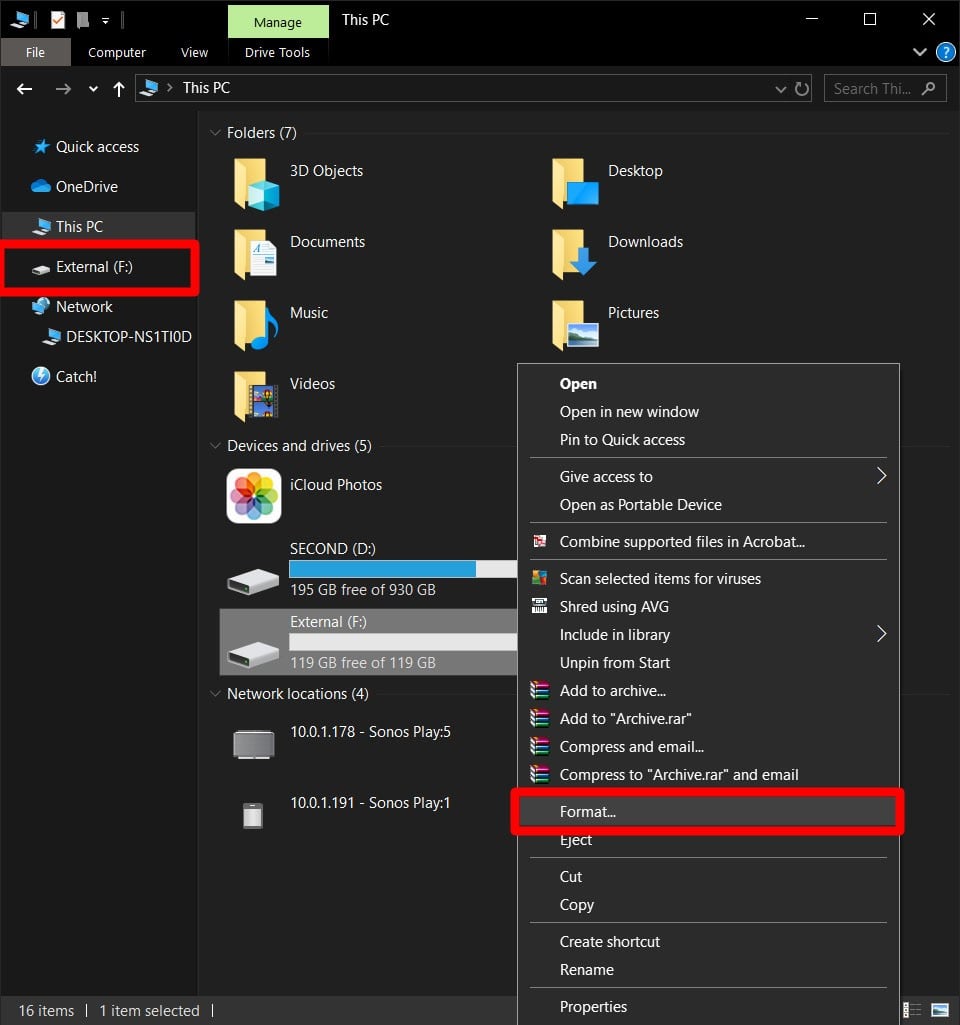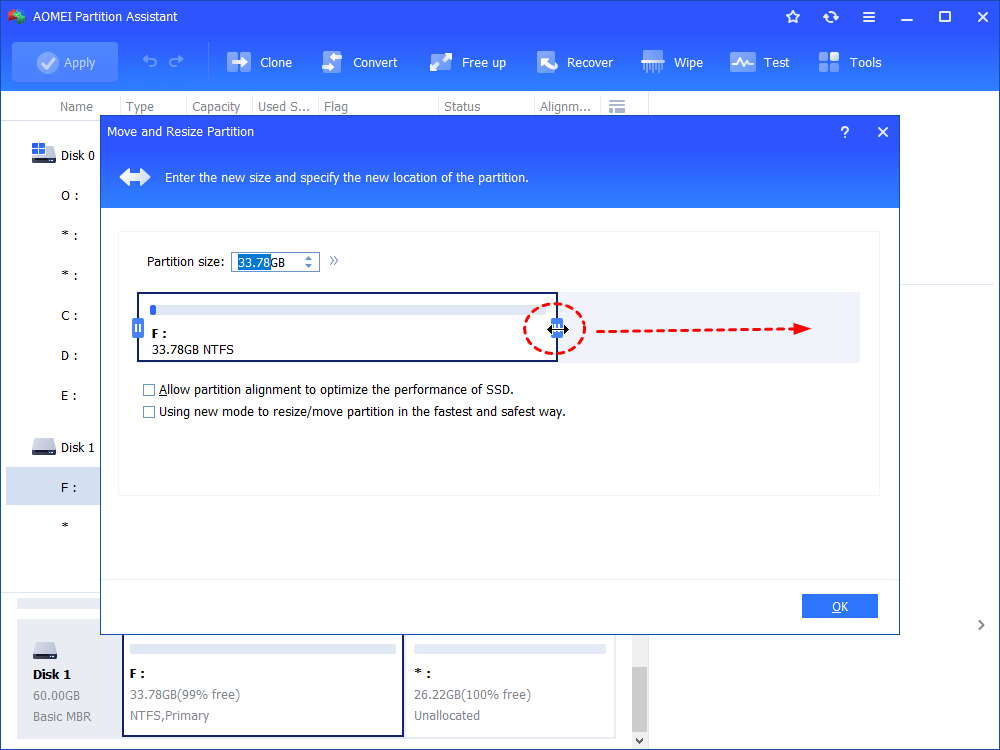
- WINDOWS 10 FORMAT USB DRIVE COMBINE VOLUMES HOW TO
- WINDOWS 10 FORMAT USB DRIVE COMBINE VOLUMES UPGRADE
- WINDOWS 10 FORMAT USB DRIVE COMBINE VOLUMES WINDOWS 10
- WINDOWS 10 FORMAT USB DRIVE COMBINE VOLUMES PC
WINDOWS 10 FORMAT USB DRIVE COMBINE VOLUMES UPGRADE
Can I use all disk space if I upgrade my computer to Windows 10Īctually, those people misunderstand the issue, because it is not the version of Windows but the partitioning scheme that rules maximum hard disk size.
WINDOWS 10 FORMAT USB DRIVE COMBINE VOLUMES PC
I have a PC with Windows 7 with a 3 TB hard drive, but about 1 TB of the drive being unusable. For example: I would like to know what is the maximum HD and partition size supported by Windows 10. Recently, I found lots of people asked the following or similar question on the internet: what is the maximum hard drive size supported by Windows 10. Why There Is Windows 8/10 or Windows 7 Maximum Hard Drive Size Limit.
WINDOWS 10 FORMAT USB DRIVE COMBINE VOLUMES HOW TO
How to Break Maximum Hard Drive Size Limit in Windows 10/8/7.What's the Maximum Hard Drive Size in Windows 10/8/7.Moreover, if you always set your USB flash disk as NTFS format, it will hurt flash memory chips because it requires constant reading and writing. It supports long filename, more security, and data recovery feature. NTFS: This is the newest format for system and device. The speed of reading and writing will slow down after long-term use.ĮxFAT: Enhanced interaction between devices and systems, especially for the flash drive. Compared to FAT 16, FAT 32 saves a lot of spaces of a drive. Drive space would waste when larger than 8 GB įAT 32: To solve the size limit of FAT 16, Microsoft decides to bring out the new generation of FAT, named FAT 32. The maximum size of a single partition is 2GB, for a single drive is 8 GB. Filename only supports up to eight characters; However, as for an old format, it also exist some defects. It has fast running speed and well compatibility. Let's move on.įAT: That is FAT 16, widely used since DOS、Windows 3.x released. It's worth thinking about what differences between them. In the process above, we have met four formats while remove and create a partition on a USB in Windows 10. Thus your USB has removed multiple partitions in Windows 10. Step 6: Right-click on USB flash drive and select New Simple Volume. Here you can see your USB flash drive is unallocated.


Step 5: Right-click on This PC then choose Manage to open Computer Management window. What's worse, you even need to reinstall the system. Or your files will be completely deleted after the command runs.

Note: Make sure it is the right disk you want to select. Input " clean" then hit Enter to clear it. To choose it, type " select disk 0" and hit Enter. Step 4: As the result shown and according to your USB size, Disk 0 is the USB we inserted into the computer. Step 3: To view your USB flash drive, input list disk and Enter. Step 1: Input cmd in the Cortana Search Bar, right-click on the result and select Run as administrator. However, when you don't need such so many volumes in your USB flash drive, remove multiple partitions is allowed in Windows 10. Partitions USB can separate our files into different types that easy to manage.
WINDOWS 10 FORMAT USB DRIVE COMBINE VOLUMES WINDOWS 10
Part 2: Remove Multiple Partitions on a USB in Windows 10 Remember to set the type of new volume as FAT, NTFS or FAT 32 format. Follow the wizard to finish partition your USB flash drive. Step 9: The New Simple Volume Wizard window will pop up. Right-click on the unallocated partition, then select New Simple Volume. Step 8: Now you will get an unallocated partition. Step 7: Enter the amount of space to shrink then tap on Shrink. Step 6: Right-click on USB removable drive, choose Shrink Volume. Next to File system, select the volume format then tap OK to continue. Note: Once you want to change NTFS to FAT format, just right-click on the NTFS disk and select Format. Waite for a while, the Command Prompt will automatically close after finishing. For example, my USB flash drive is NEW VOLUME (F:) so I have to run "Convert F:/fs:ntfs" command. Input "Convert X:/fs:ntfs" then hit Enter. Press Windows+ R key to invoke Run dialog box. To partition it, you have to change it to NTFS format. Step 5: As you can see, the default format of USB is FAT. Step 4: The details of each disk will show you at the right panel. Expand Storage and double-click on Disk Management.

Step 3: The Computer Management window will open. Step 2: On the desktop, right-click on This PC and select Manage from the list. Step 1: Insert your USB flash drive into the USB port. Here are tutorials to create multiple partitions in Windows 10. Part 1: Create Multiple Partitions on a USB in Windows 10


 0 kommentar(er)
0 kommentar(er)
